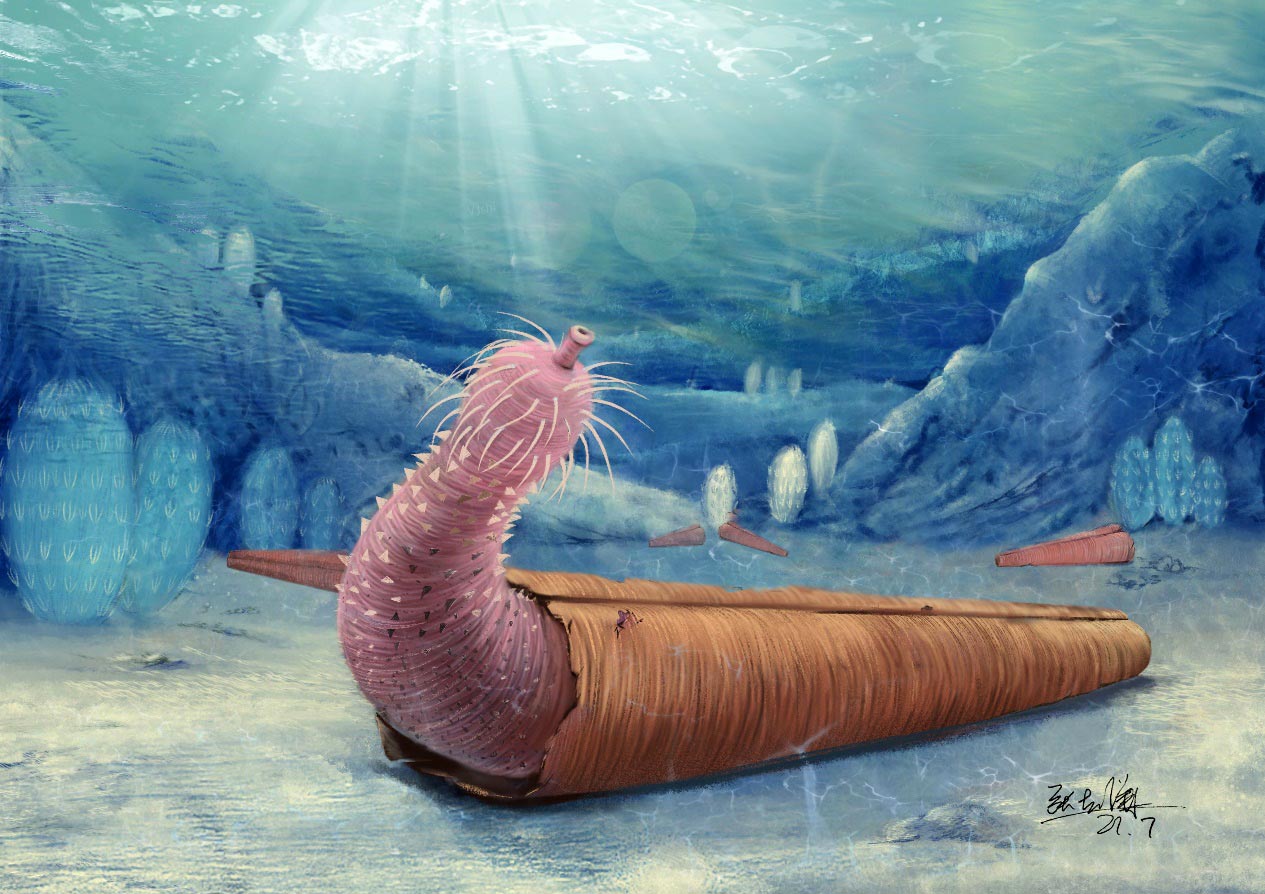Prehistoric ‘penis worms’ were the first creatures to use discarded shells to avoid predators, study finds
Findings indicate key role of predators in shaping ecology and behaviour in very early stages of animal evolution, researchers say

Strange-looking sea animals colloquially called “penis worms”, which lived more than 500 million years ago, may have been the earliest to employ a hermit crab lifestyle by using the discarded shells of other organisms as shields against predators, a new study has suggested.
While modern-day hermit crabs are well known for using discarded snail shells as shelters, researchers have found that penis worms invented this lifestyle at the dawn of the earliest animal ecosystems during the Cambrian period – hundreds of millions of years before hermit crabs first evolved.
The study was conducted by scientists from Yunnan University in China and Durham University in England, and published in the journal Current Biology. The scientists studied collections of fossil deposits in Guanshan, China, in which soft tissue — such as the bodies of worms — were preserved alongside shelly material that makes up conventional fossil records.
They found four specimens of penis worms belonging to the genus Eximipriapulus inside conical shells of hyoliths — a long-extinct fossil group.
Since predators during this Cambrian era were plentiful and aggressive, scientists said the penis worms would have taken permanent shelter in empty shells.
“The worms are always sitting snugly within these same types of shells, in the same position and orientation. The only explanation that made sense was that these shells were their homes — something that came as a real surprise,” the study’s co-author Martin Smith of Durham University said in a statement.
Until now, this kind of “hermitting lifestyle” — involving the adoption of a different organism’s exoskeleton — has never been documented or observed in any organism living earlier than the “Mesozoic Marine Revolution” period 251 million to 66 million years ago, when there was a rise of shell-crushing and boring predators, the scientists said.
The findings, the researchers added, indicate the key role of predators in shaping ecology and behaviour in the very early stages of animal evolution.
The evolution of this trait independently in the immediate aftermath of the “Cambrian explosion” about 541 million years ago when modern animal body plans rapidly arose, highlighted the remarkable speed and flexibility of the evolutionary process, the scientists added.
“Not long before these organisms existed, there was nothing alive more complex than seaweeds or jellyfish: so it’s mind-boggling that we start to see the complex and dangerous ecologies usually associated with much younger geological periods so soon after the first complex animals arrive on the scene,” Dr Smith added.
Subscribe to Independent Premium to bookmark this article
Want to bookmark your favourite articles and stories to read or reference later? Start your Independent Premium subscription today.

Join our commenting forum
Join thought-provoking conversations, follow other Independent readers and see their replies